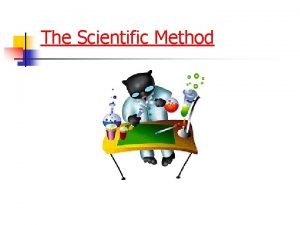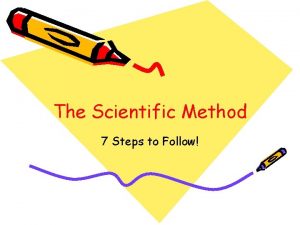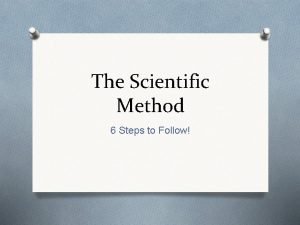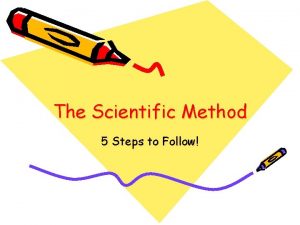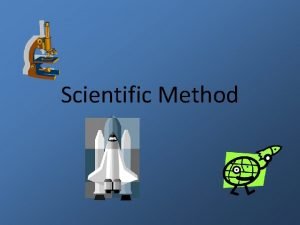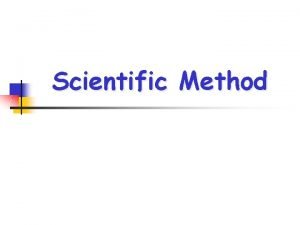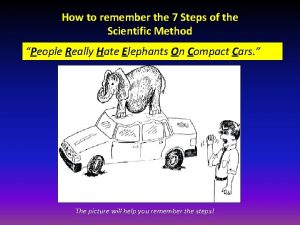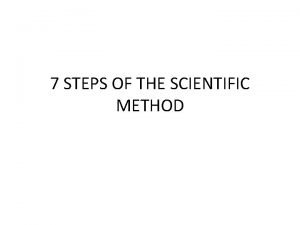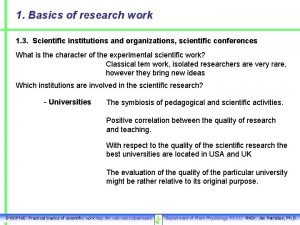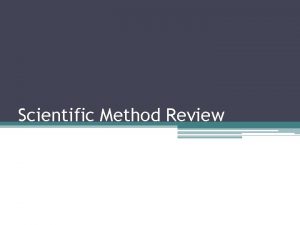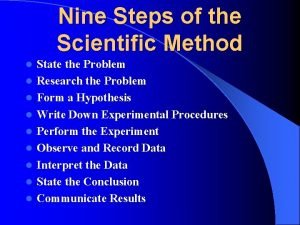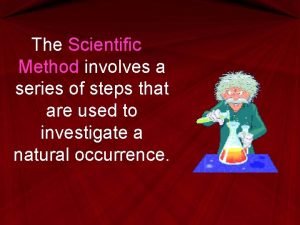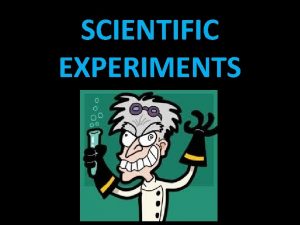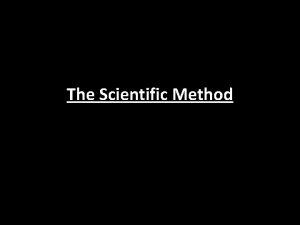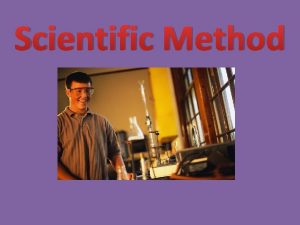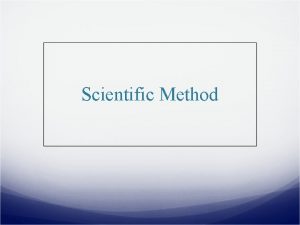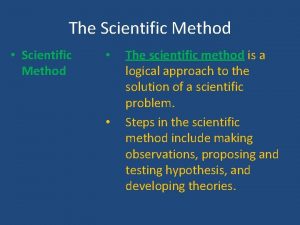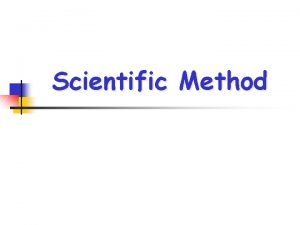Scientific Method Steps in the Scientific Method n
















- Slides: 16

Scientific Method

Steps in the Scientific Method n n n n Observation Hypothesis Experiment Data Collection Conclusion Retest Communicate Results

Experiment n A procedure to test the hypothesis.

Experiment Variable – factor in the experiment that is being tested or changed

Experiment A good or “valid” experiment will only have ONE Independent Variable!

Scientific Experiments Follow Rules n An experimenter changes one factor and observes or measures what happens.

The Constants The experimenter makes a special effort to keep other factors the same so that they will not effect the outcome. n Those unchanging factors are called constants. n

The Variables n n n Variable = something that changes The factor that is changed is known as the independent variable. (YOU CHANGE) The factor that is measured or observed is called the dependent variable. (YOU MEASURE)

Example of Controls & Variables n n n For example, suppose you want to figure out the fastest route to walk home from school. You will try several different routes and time how long it takes you to get home by each one. Since you are only interested in finding a route that is fastest for you, you will do the walking yourself.

Multiple Trials n n One more thing… it is best to make several trials with the independent variable. (Different from repeating the experiment)

The Control A CONTROL is used for COMPARISON n Two groups are required --the control & experimental groups n n The INDEPENDENT Variable should only be changed in the EXPERIMENTAL GROUP

Retest In order to verify the results, experiments must be retested. This is different than having multiple trials within the same experiment.

Validity n An experiment is considered valid IF it meets the following criteria: n Only has 1 independent variable n Must have a control group n ALL other factors are kept constant n Tests the proposed question n Data is collected accurately n Is able to be repeated by someone else with similar results

Review Is this a valid experiment? https: //www. youtube. com/watch? v=_7 s. Suh. Q 1_24

Solving a Problem 1)Identify a Problem 2) State Observations about the problem 3) Form a Hypothesis about the problem (if…then…) 4) Design an Experiment to test the hypothesis 5) Collect Data and Organize it 6) Form a Conclusion 7) Retest

Exit Slip n n What do you think could have caused an error in your heart rate experiment? List as many as you can.
 7 steps of the scientific method
7 steps of the scientific method 7 steps of the scientific method
7 steps of the scientific method 7 steps of scientific inquiry
7 steps of scientific inquiry 6 steps scientific method
6 steps scientific method Five steps of the scientific method
Five steps of the scientific method Importance of scientific method
Importance of scientific method Scientific method steps
Scientific method steps Scientific method 5 steps
Scientific method 5 steps Seven steps to the scientific method
Seven steps to the scientific method 7 steps to scientific method
7 steps to scientific method Steps of scientific method
Steps of scientific method Six steps to the scientific method
Six steps to the scientific method What are the nine steps of the scientific method
What are the nine steps of the scientific method Scientific method steps
Scientific method steps Scientific method steps
Scientific method steps Scientific method steps
Scientific method steps Scientific method steps
Scientific method steps
